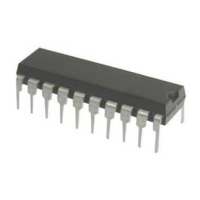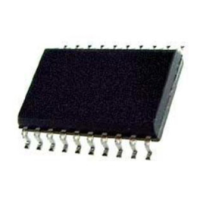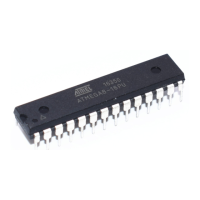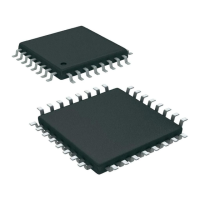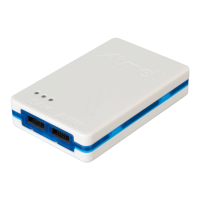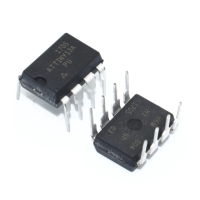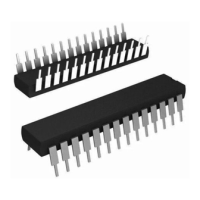AT90S4414/8515
62
Port C
Port C is an 8-bit bi-directional I/O port. Three I/O memory address locations are allocated for the Port C, one each for the
Data Register - PORTC, $15($35), Data Direction Register - DDRC, $14($34) and the Port C Input Pins - PINC, $13($33).
The Port C Input Pins address is read only, while the Data Register and the Data Direction Register are read/write.
All port pins have individually selectable pull-up resistors. The Port C output buffers can sink 20mA and thus drive LED dis-
plays directly. When pins PC0 to PC7 are used as inputs and are externally pulled low, they will source current if the
internal pull-up resistors are activated.
The Port C pins have alternate functions related to the optional external data SRAM. Port C can be configured to be the
high-order address byte during accesses to external data memory. When Port C is set to the alternate function by the SRE
- External SRAM Enable - bit in the MCUCR - MCU Control Register, the alternate settings override the data direction
register.
Port C Data Register - PORTC
Port C Data Direction Register - DDRC
Port C Input Pins Address - PINC
The Port C Input Pins address - PINC - is not a register, and this address enables access to the physical value on each
Port C pin. When reading PORTC, the Port C Data Latch is read, and when reading PINC, the logical values present on the
pins are read.
PortC as General Digital I/O
All 8 pins in Port C have equal functionality when used as digital I/O pins.
PCn, General I/O pin: The DDCn bit in the DDRC register selects the direction of this pin, if DDCn is set (one), PCn is con-
figured as an output pin. If DDCn is cleared (zero), PCn is configured as an input pin. If PORTCn is set (one) when the pin
configured as an input pin, the MOS pull up resistor is activated. To switch the pull up resistor off, PORTCn has to be
cleared (zero) or the pin has to be configured as an output pin. The Port C pins are tri-stated when a reset condition
becomes active, even if the clock is not active.
n: 7…0, pin number
Bit 76543210
$15 ($35) PORTC7 PORTC6 PORTC5 PORTC4 PORTC3 PORTC2 PORTC1 PORTC0 PORTC
Read/Write R/W R/W R/W R/W R/W R/W R/W R/W
Initial value 0 0 0 0 0 0 0 0
Bit 76543210
$14 ($34) DDC7 DDC6 DDC5 DDC4 DDC3 DDC2 DDC1 DDC0 DDRC
Read/Write R/W R/W R/W R/W R/W R/W R/W R/W
Initial value 0 0 0 0 0 0 0 0
Bit 76543210
$13 ($33) PINC7 PINC6 PINC5 PINC4 PINC3 PINC2 PINC1 PINC0 PINC
Read/Write RRRRRRRR
Initial value Hi-Z Hi-Z Hi-Z Hi-Z Hi-Z Hi-Z Hi-Z Hi-Z
Table 23. DDCn Effects on Port C Pins
DDCn PORTCn I/O Pull up Comment
0 0 Input No Tri-state (Hi-Z)
0 1 Input Yes PCn will source current if ext. pulled low.
1 0 Output No Push-Pull Zero Output
1 1 Output No Push-Pull One Output
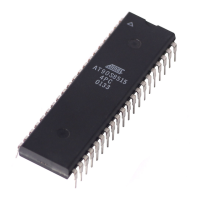
